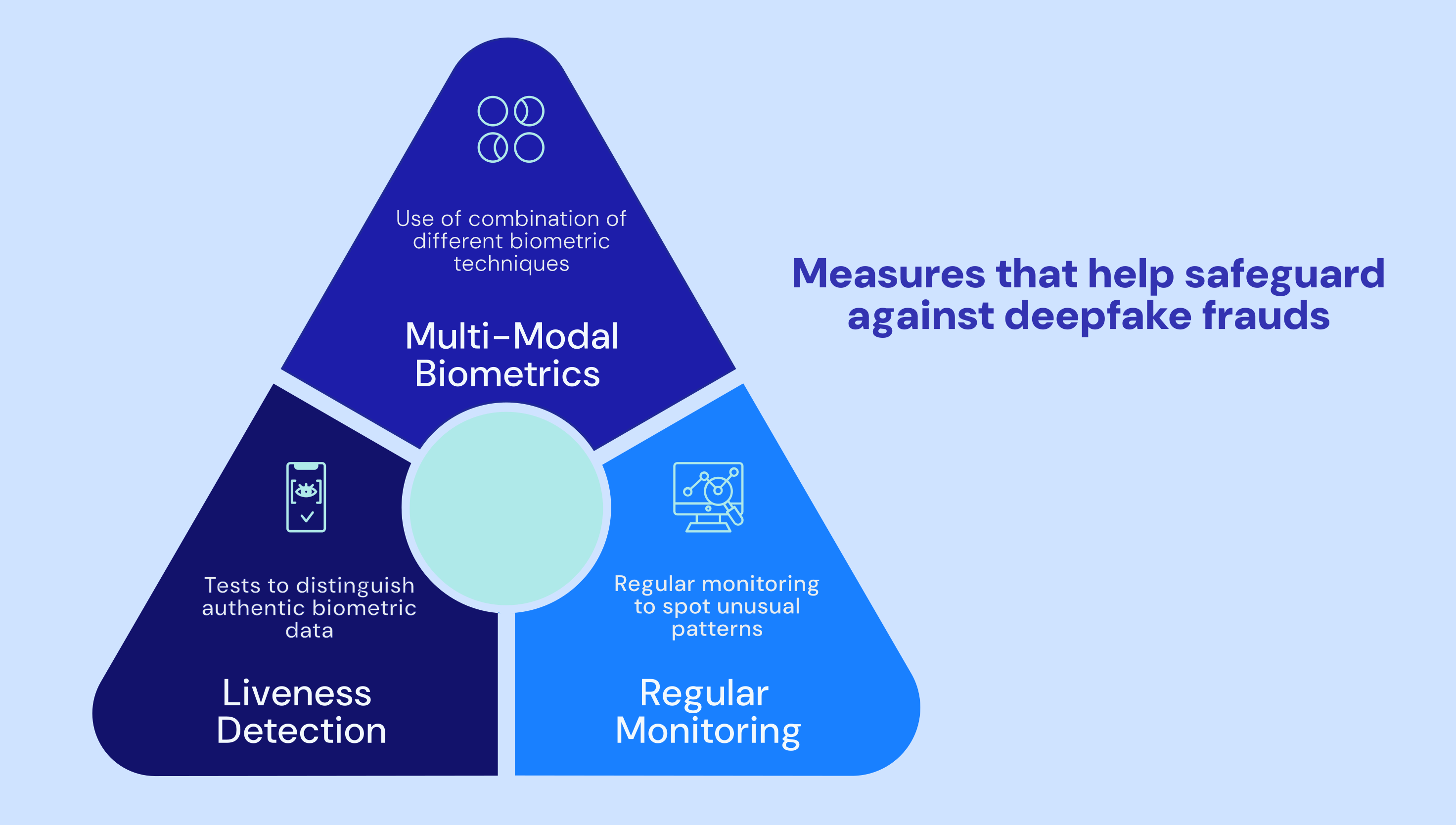Deepfakes, in today’s digital era, have become a major threat to identity verification processes!
Earlier, deepfakes were difficult to create because of the unavailability of sophisticated tech versions.
But now, the easy accessibility of generative AI and face-swap tools are allowing fraudsters to pull off deepfake fraud attempts effortlessly.
Driven by machine learning algorithms, deepfakes help in the recreation or modification of audio-visual content in less time. As technology develops, the threat of deepfakes hangs largely over the identity verification space, decreasing the efficacy of conventional verification techniques and opening the door for fraudulent activities.
Organisations need to take proactive measures to combat these advanced tech frauds.
But before that, let’s delve into the mechanics of deepfakes.
Understanding deepfakes
In the beginning, deepfakes – in the form of amusing content – were just considered for entertaining purposes.
Gradually, it became more menacing when paired with tools for cyberattacks and malicious intent.
And now, it has become a powerful way of initiating cyberattacks, disseminating false information, and influencing public opinion.
Tools such as Computer-Generated Imagery (CGI) and artificial intelligence (AI) are behind these deepfakes.
These tools assist in generating more realistic synthetic content to replicate human behavior, including voice and facial expressions.
These tools, when they get into the hands of criminal-minded people, among other things, generate false identities, impersonate people, and obtain accessibility to secure locations.
With the advancement in technology, it is quite challenging to distinguish real information from fake ones because deepfake content looks fairly convincing to identity verification systems and even to trained personnel.
As AI is evolving, deepfakes are continually evolving, too!
Now, let’s talk about the impact of deepfakes in identity verification – especially in how it will be used to manipulate public opinion or to commit fraud and other illegal activities.
Impact of deepfakes in identity verification – Industries at risk
Traditional identity verification methods are not able to face threats posed by the advent of deepfake technology.
Deepfakes have made it easier for fraudulent people to modify content as well, which makes it challenging for businesses to authenticate an individual’s identification precisely and reliably.
Deepfakes are growing more realistic in audio and video forms, making it more difficult for businesses to rely on digital documents or confirm the identity of individuals, which increases security flaws and the risk of data breaches.
Even the video call verification process which involves having a live conversation with someone to verify your identity is no more a go-to option for organisations.
Why?
High involvement of labour. Costly. Automation is not possible. Non-scalability.
Plus, Deepfakes can be introduced into the live video stream easily, hence posing the greatest threat to the video verification process.
But do you know that humans cannot be trusted more than biometrics, for identifying deepfakes? Therefore, it is advisable for organisations to keep in mind that deepfakes and other Generative AI content are not a “biometric problem”. Rather a remote identity verification problem.
Conducting identity verification remotely is essential for those organizations that are online-based. Organizations must use AI for cybersecurity to combat the threat of deepfakes (for example, AI-powered biometrics).
Therefore, it is essential to understand deepfakes first and how they are made. Then their effects on digital identity security to secure identity verifications.
People can now access their accounts and personal information more easily and securely – thanks to technological advancements in user verification!
Automated identity verification processes can help businesses ensure that they can manage large volumes of client demands while mitigating the risk of fraud by maintaining both confidentiality and customer experience.
It is an undeniable fact that identity theft is facing a growing danger from deepfakes.
During the identity verification process, facial recognition technology is widely used, which puts a question mark on identity theft and improper use of personal photos.
Furthermore, the technology behind deepfakes has made it quite easy to produce false identities in such a realistic way that now it is next to impossible for organisations to authenticate online identities.
Hence, being aware of multi-factor authentication (MFA) and anti-spoofing techniques can help an organisation prevent identity theft. Having a ‘deep’ understanding of deepfakes and risks related to them will also help with data security in the coming time.
Safeguarding against deepfake frauds
To counteract this threat, organisations require innovative tools that can swiftly identify instances of identity theft in digitally created media. Below are a few measures that can be implemented:
When it comes to identifying counterfeit content, technical biometric tools such as liveness detection backed by scientific concepts and active threat intelligence will be crucial.
But still, human research and analytical abilities are essential.
The only solution is to establish a system combining both human and AI power.
AI-powered identity verification with Signzy
As the threat posed by deepfakes intensifies, the need for robust identity verification processes is becoming more and more necessary. Around 2/3rd of consumers are willing to use digital identity for online verification ditching traditional physical IDs.
Organisations can combat deepfakes by utilizing liveness biometric verification systems, which are driven by deep learning anti-spoofing AI models. Document verification adds an extra degree of security, combined with biometric verification.
This ensures that the person trying to sign up is genuine and not artificial and documents provided actually belong to that person.
Nowadays, businesses are highly concerned about identity fraud caused by deepfakes.
With deepfakes expected to continue challenging identity verification procedures, it is critical for an organisation to remain at the forefront of technology and knowledge. By enhancing their ability to manage risks and maintain integrity of identity verification procedures in the digital era, the organisation can overcome this challenge.
And in this journey, Signzy would be a good partner for the organisation!
Our AI-powered identity verification system has been designed with the following features to serve our clients better:
- Video forensics
- Geo-tagging features
- Digital forgery check
- Seamless user interface
- End-to-end encryption
To conclude, as deepfake technology advances, organizations need to be vigilant in order to prevent fraud and identity theft. In the digital age, Signzy can safely and securely verify identities by being aware of threats and implementing the aforementioned measures.














